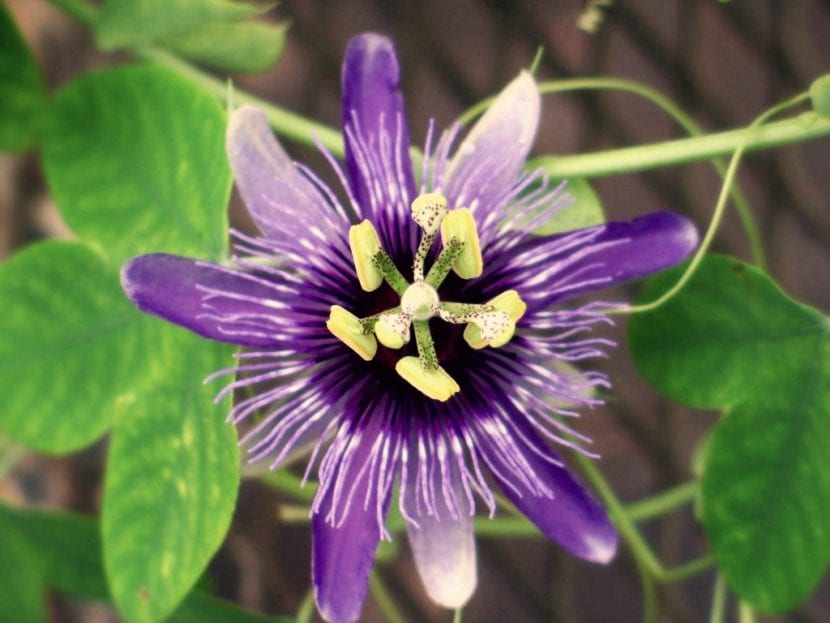
P.amethystina
All the Passiflora They are a botanical genus of lianas that grow in the warm regions of Asia, Australia, and Oceania. You will probably know them better by their popular name, Flower of the Passion, which refers to the Passion of Christ since the first missionaries saw in their flowers the instruments that were used during the Passion.
They are very popular in gardens, and it is not for less: their flowers are very brightly colored, so they beautify any corner. Let's delve into the fascinating world of Passiflora to get to know them better.
Passiflora characteristics
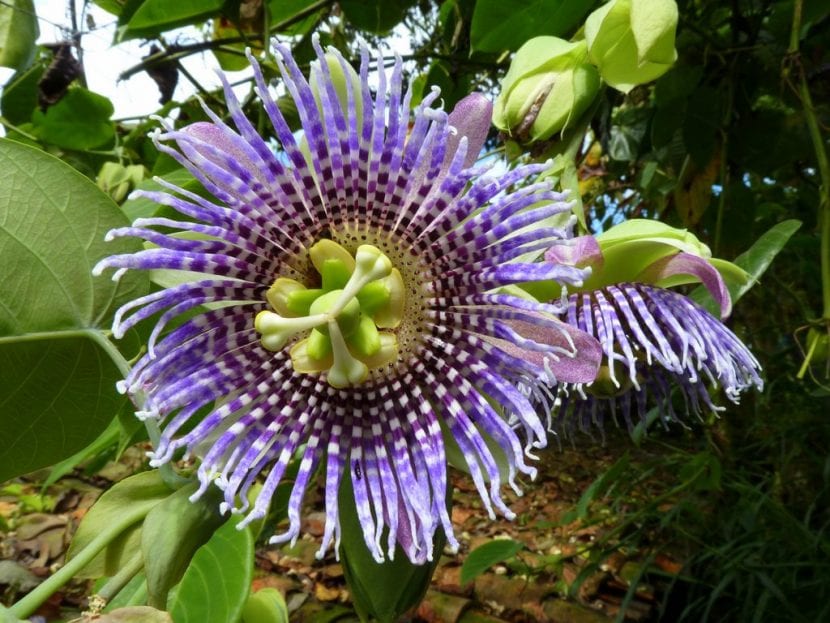
P. ligularis
These evergreen plants can grow up to 6-7 meters, as long as they are near a vertical surface where they can climb, since although they have tendrils, if they do not detect anything to grow through, they will develop at ground level, as if it were a creeping plant.
Its leaves are normally trilobed, that is, they are composed of three lobes, but there are species that have them whole. The flowers, which sprout in summer, are very showy, with colors ranging from white to red, passing through purple.. If all goes well and they are pollinated, the seeds will begin to ripen. Once they have finished the ripening process, they will be dark, blackish or brown in color, and will measure about 7mm.
The most popular species are:
- Passiflora caerulea: native to Brazil and Peru. It is known by the name of Pasionaria azul because of the color of its flowers. It is the most resistant to cold, supporting up to -10ºC if it is sheltered.
- Passiflora edulis: originally from Brazil. It is known by the name of passion fruit or granadilla, and produces edible fruits. Supports up to 5ºC.
- Passiflora quadrangularis: It is originally from Brazil, and unfortunately it does not support frost either. It grows in full sun, with temperatures between 17 and 30ºC. Produces edible fruits.
How are they cared for?
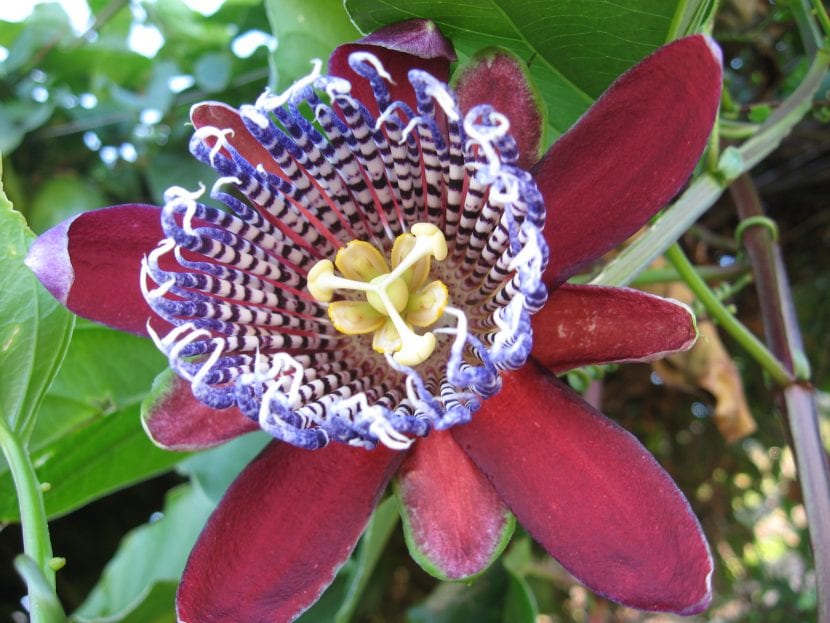
P. alata
The Passiflora, although most are very sensitive to cold, if they live in the right climate they are not demanding plants, and even the P. caerulea it is a species that can be had without problems in temperate climates. If you would like to have one, follow our advice:
Location
They should preferably be placed outside, in semi-shade. But if there are frosts in your area, you can have them inside the home, in a room with plenty of natural light.
Irrigation
During the spring and summer months they have to be watered frequently, up to 3 times a week, while in autumn and winter a weekly watering will suffice. It is important to avoid waterlogging, as the roots could rot. When in doubt, it is always better check substrate moisture. To do this, you can do the following:
- Insert a thin wooden stick to the bottom. If it comes out with a lot of adherent soil, it is because it is humid and, therefore, it will not be necessary to water.
- If the plants are young, the pots can be taken once watered and again after a few days. You will notice that as the soil dries, it weighs much less. This will help you get an idea of what it can weigh, and when you have to water.
- Use a soil moisture meter. It is very easy to use, because you just have to insert it and it will immediately tell you if the ground is dry or wet. But, yes, to be really useful, I recommend you introduce it again in other parts of the pot.
Subscriber
During spring and summer you can fertilize with mineral or liquid organic fertilizers, following the indications specified on the package.
Pruning
After flowering up to 3 buds can be cut from the stems that have blossomed.
Passiflora problems
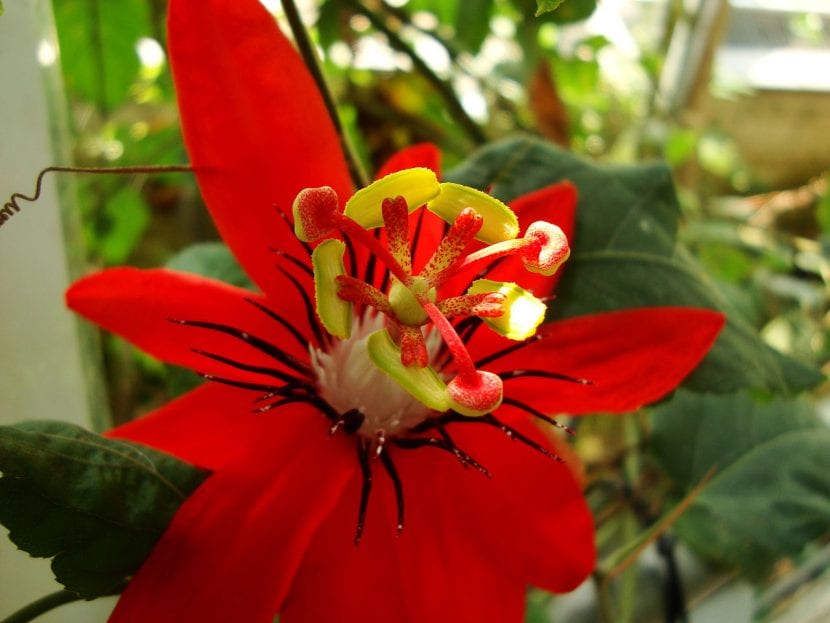
P.miniata
Although they are very resistant plants, they also have their enemies, which are the mealybugs, aphids and mites. All three can be prevented or treated with Neem oil or, if the plague is widespread, with 40% Dimethoate.
But also may have yellow leaves as a result of overwatering or lack of nutrients. In the first case, the waterings have to be spaced, and in the second, once they are fertilized, they can continue to grow normally, although the yellow leaves will not turn green, so you can remove them.
How do they reproduce?
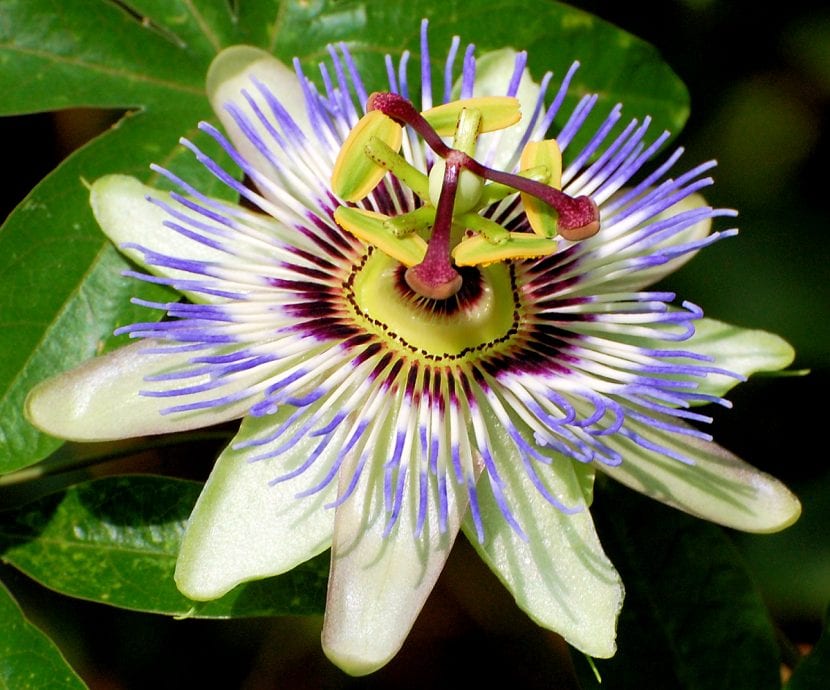
P. caerulea
You can have new specimens in two different ways: making cuttings or sowing their seeds in spring. Let's see how to proceed in each case:
Siembra
Once the seeds are purchased, it is highly recommended put them in a glass of water for 24 hours so that they hydrate and can germinate better. It is not an essential step, much less mandatory, but if we do it the germination percentage will be higher.
The next day will be sown in pots or in seedling trays putting a maximum of two seeds in each container or socket that we will have previously filled with universal growing substrate.
Finally, it will only be necessary to water now and every 2-3 days. This way, the seeds will begin to germinate after 2-4 weeks.
Cuttings
The fastest way to get new Passiflora is by cuttings with three leaves, cutting them with scissors and planting them in mixed sand and peat. Since humidity is important, you can cover the pots with plastic. This way they will not take more than 2-3 weeks to root.
Uses of Passiflora
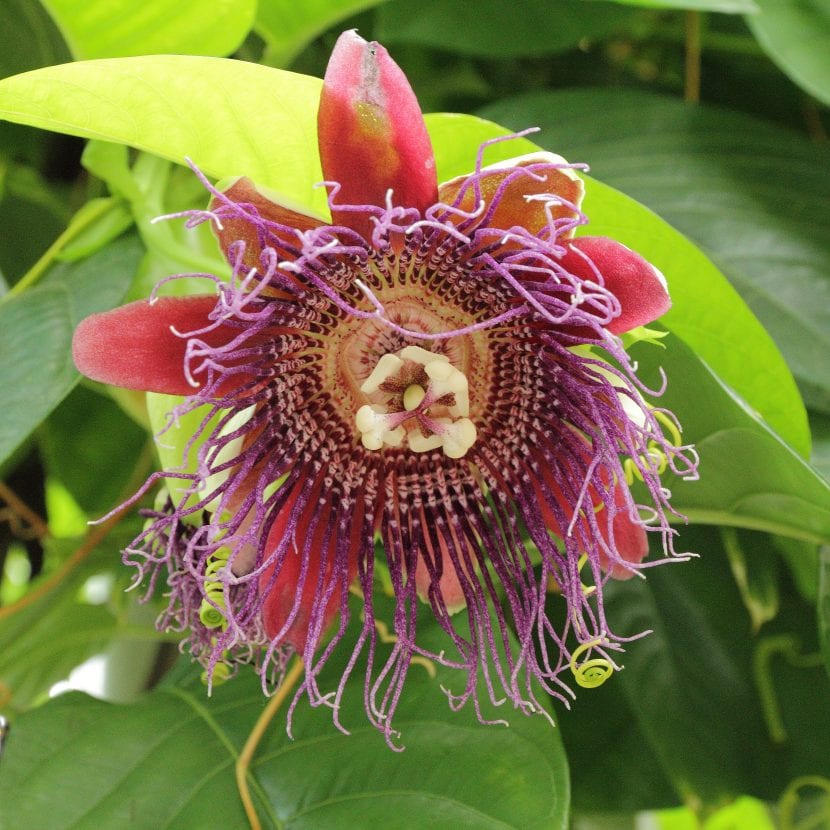
P. quadrangularis
These plants are used primarily for their incredible ornamental value. Its flowers make the room look more alive, more beautiful. But, of course, some species are also used for their delicious fruits, such as those of the P. edulis.
And by the way, did you know that there is one that is medicinal? It is the Passiflora incarnata, which serves as anxiolytic, sedative, antispasmodic y sleeping pill. It is, therefore, the best ally against stress, nerves and anxiety, since it also does not create dependency. Of course, all excesses are very harmful, so to avoid problems, you should know that You can make an infusion with 1 to 3 grams of dried leaves and drink three cups a day.
In the event that more than the recommended amount is drunk, the following symptoms may appear: dizziness, confusion and / or irregular coordination. If you are a woman, you cannot take it if you are pregnant or suspect that you may be pregnant, nor while breastfeeding. What's more, you don't have to drink if you have to drive.
So far the Passiflora special. What do you think? 🙂
Fantastic article! I am thinking of growing a Passiflora Edulis Edulis, so this article suits me 🙂
From what I see, from 5 degrees it freezes. Does it have to be a few days in a row or with the whole winter having a day that makes that temperature and will it spoil me?
A greeting.
Hi John.
I'm glad you liked the article 🙂.
Unfortunately yes, even if it is only one day that this frost occurs, the plant will notice it. But you can have it indoors in winter, so you don't notice the cold. Then in spring you take it out and it will grow like nothing.
A greeting.
Good afternoon,
Thanks for the information, I would like to know if you have knowledge of the passiflora maliformis and what are its shortcomings in production.
Thank you
Hello, Gloria.
Passiflora maliformis needs a warm and humid climate in order to develop and grow well. In other words, it must be watered very often, and planted in fertile soils, with a lot of organic matter, in an area where the minimum temperature remains above 0º.
A greeting.
Hello, I have the red passiflora and I want to grow more plants but I don't know how, because they have told me that it is made from the dried flower and the fruit but it has not worked for me. I would appreciate your reply
Hello Engel.
You can multiply it by cuttings that have 3 leaves. Then you just have to plant them in pots with substrate for plants.
A greeting.
Very good information
We are glad you liked it 🙂
great info, thanks
We are glad that you found it interesting 🙂
Hello, I would like to know a little more information about passiflora alata since I have some flowers and they seem to have some type of fruit, do I have to do something so that the fruits turn out well? I am looking forward to your response.
Hello!! very good article without a doubt passionflower is a very interesting little plant, as a result of this I wanted to leave a query, I recently bought a copy, however I do not know what species of passionflower it corresponds to, I am very interested in its medicinal properties. In the article they mention that the P. edulis species is the one that has these properties, my question is: are these properties exclusive to this species, or do others also possess them perhaps to a lesser extent?
Thank you very much in advance for your answer, I will become a follower of your page ahahah
Thank you
Hi Luis.
From what I understand, they are all those that have medicinal properties. But I can't assure you 100%.
We are glad that you liked the article. Greetings!
Very good information, since I have several plants and I needed information to multiply them and for cuttings it seems very good, thanks
Thanks, Carlos. We are glad to know that it has been useful to you. Greetings!
Great, a friend has passiflora and the flowers are beautiful! ,,,
We're glad you liked it, Monste. The flowers of these plants are very pretty.